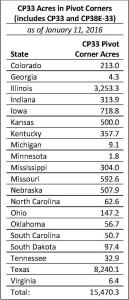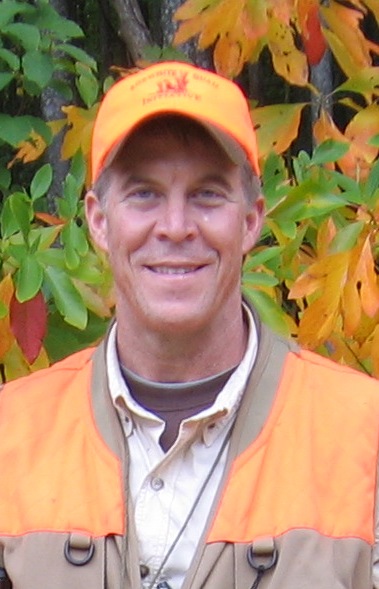Home runs are uncommon in wildlife conservation policy; but when one happens, it can be a game-changer. Much of the future for large-scale bobwhite restoration depends on improving federal habitat conservation policy. Thus, policy is a high priority for the NBCI, even though demonstrable accomplishments are few and far between and require extensive amounts of time and work to achieve.
The NBCI and its stalwart community of bobwhite conservationists hit one out of the park one year ago this month. The USDA Farm Service Agency (FSA) finally – after 19 years of technical recommendations and urging by the bobwhite conservation community and the NBCI – approved stand-alone eligibility for corners of center pivot-irrigated crop fields into the Continuous Conservation Reserve Program (CCRP). FSA authorized 250,000 acres for immediate enrollment of pivot corners into the CCRP as a variant of the CP33 field border practice. This $250 million wildlife conservation value comes as a federal “free pass” to the state wildlife agencies and their partners, courtesy of FSA, through the persistence, hard work and leadership primarily of the NBCI and the National Bobwhite Technical Committee (NBTC).
This premium bobwhite habitat practice has high potential to make something good out of nothing. In pivot-dominated landscapes, the unirrigated, marginal corners can comprise more than 20%of the total landscape acreage. Thus, this new practice can increase suitable habitat from about 0% to 20% of the center pivot landscape for bobwhites, certain grasslan d birds and pollinators. For context, consider that the new NBCI focal area program – the Coordinated Implementation Program (CIP) – sets a threshold of 25% of a landscape in suitable habitat as the minimum needed to sustain a wild bobwhite population. This new pivot-corner practice alone has the capability to transform a habitat-devoid landscape to grasslands that can support bobwhites.
d birds and pollinators. For context, consider that the new NBCI focal area program – the Coordinated Implementation Program (CIP) – sets a threshold of 25% of a landscape in suitable habitat as the minimum needed to sustain a wild bobwhite population. This new pivot-corner practice alone has the capability to transform a habitat-devoid landscape to grasslands that can support bobwhites.
But the best opportunity – even when presented on a silver platter – is no better than its implementation. Some 17.5 million acres of pivot-irrigated cropland exists across 24 of the 25 NBCI states (West Virginia is the only NBCI state with no center pivot irrigation). Yet, one year after this long-sought practice was established, only 15,470 acres of corners have been enrolled, total, across the 24 states. Texas admirably leads the nation with 8,240 acres of pivot-corner enrollment, more than all the other states combined.
Undoubtedly, many reasons can and will be pointed out for this paltry level of enrollment and habitat creation. But the bottom line is a prime, hard-earned quail habitat opportunity is being missed. The NBCI and NBTC have done our job, meeting or exceeding expectations. We created a huge new opportunity and secured major federal funding for the states to create bobwhite habitat. To promote the practice, the NBCI created a customizable informative flyer for use by the states and has publicized it in multiple ways.
Now it’s up to the states and our federal and NGO bobwhite conservation partners to hit the ball out of the park. Aggressive collaboration among USDA field offices, landowners and local agricultural and conservation organizations is imperative to realize the benefits of center pivot corners for bobwhites, other grassland birds, pollinators and producers. This is no time for our community to strike out on this long-needed and hard-earned pitch down the middle.
January 25, 2016






